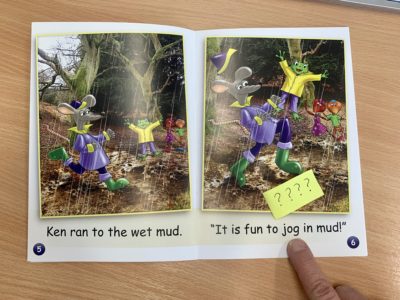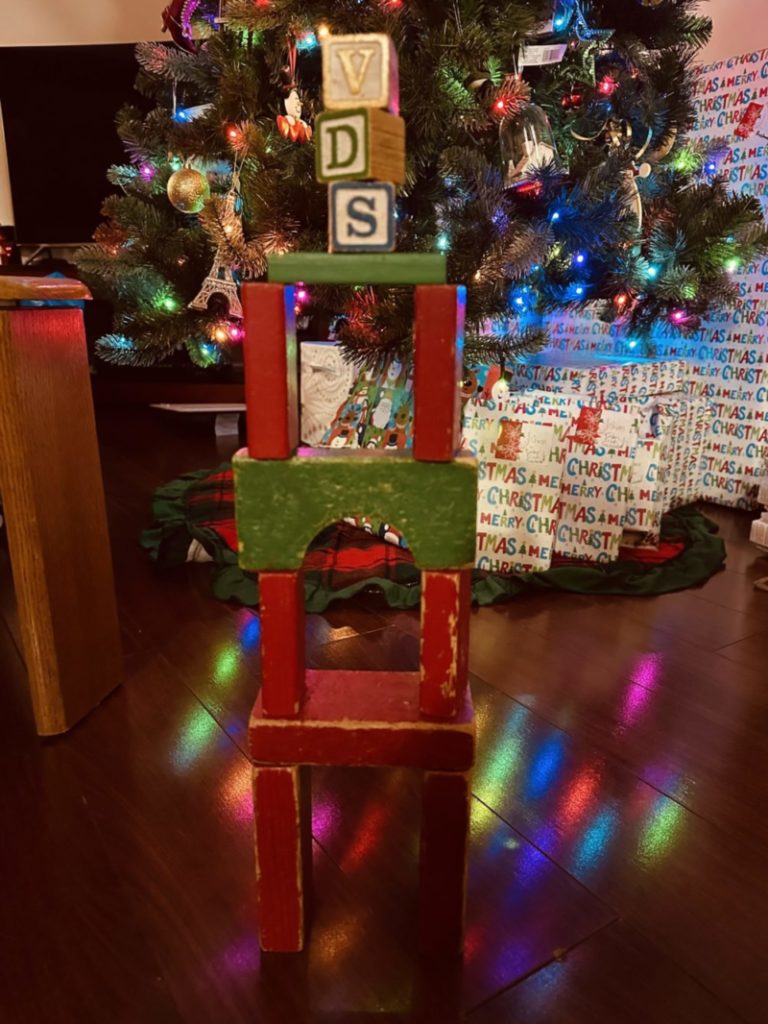We all want our children to find learning to read exciting and enjoyable, but what happens when they get stuck? Should we be quick to help, or wait and let them figure it out themselves? With the help of a set of building blocks, literacy specialist, Savannah Campbell, explains how we can encourage productive struggling.
My daughter loves to play with building blocks. We have a set of blocks that were my husband’s 30 years ago. Sometimes when she is playing, she wants to build a tower and it just keeps falling. I never know—when do I step in? When do I let her do the hard work on her own? As a parent, my heart says help, but my brain knows that sometimes the only way to learn is by letting her experience the difficult parts herself. Other times, I see her playing with my husband. He embraces the struggle and lets her mess up and try again. And guess what? She builds the tallest towers when she is playing with him.
I share this story because of how it can relate to reading. When our children are reading a word and they are stuck, we want to give it to them. No one likes to see their child struggle, and our knee jerk reaction is to step in and give that word. But learning to read takes place in that struggle, and we have to remind ourselves not to take it from them. It is only by doing the hard work themselves that they are able to succeed.
So when do we step in, and when do we let our children struggle productively? If a child is stuck on a word, do not just give it to them unless it is a word that you know they are not able to decode.

When it is a name, an irregular word, or simply a pattern they haven’t come across yet, then it is okay to tell them the word. If you find yourself having to give your child multiple words in a text while reading, it may be too difficult for them to read on their own. Don’t tell them they can’t read it, but perhaps suggest that you take a turn reading for a while.
When you know that it is a word your child is able to decode, it is okay to sit in silence for a few seconds. If they continue to struggle, a gentle prompting of “say the sounds and blend the word” is appropriate. If they pronounce a word wrong, here are some other prompts you might use:
- What other sound can that vowel represent? (Vowels tend to cause our children the most trouble.)
- I love the way you read ______ correctly. Let’s take a look at those other letters and think about what sounds they represent.
- Let’s try looking at this big word in little parts. I’m going to cover up some letters, and I want you to read the parts as I uncover them. Then, we can blend the whole word.
There’s no need to overcomplicate it with elaborate strategy posters or rituals. We always want to take it back to the sounds that the letters represent. So from here on out, let’s agree to embrace the struggle. It’s the only way our children will be able to take complete ownership and pride in the tower (or literate lives) that they have built.
* * *
This guest blog is by K-5 reading specialist, Savannah Campbell. Savannah has taught her entire career at the school she went to as a child. She holds two master’s degrees in education from the College of William and Mary, and is both Orton-Gillingham and LETRS trained. Her greatest hope in life is to allow all children to live the life they want by helping them to become literate individuals.
Check out Phonic Books’ range of Dandelion books for beginner readers.


